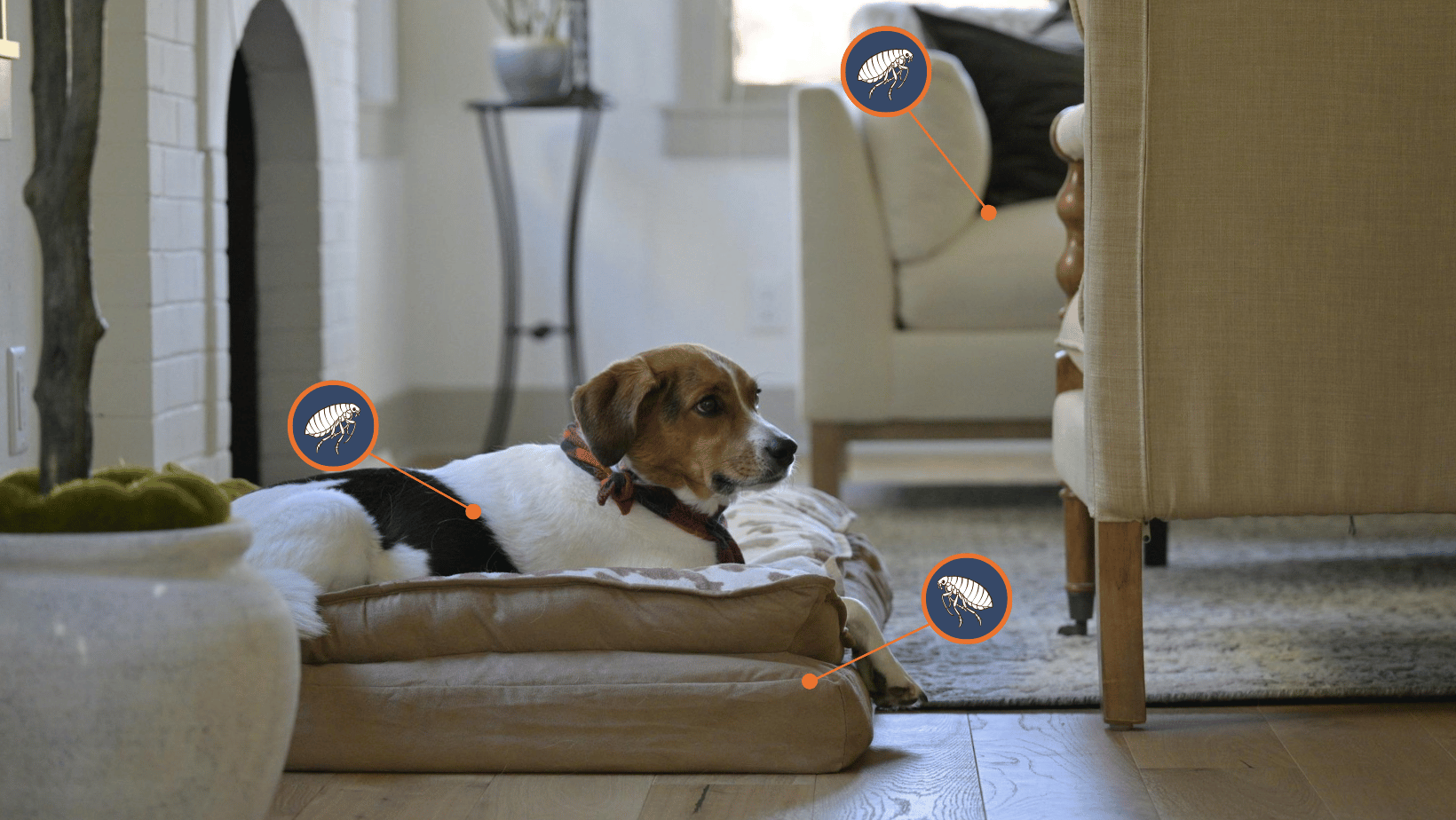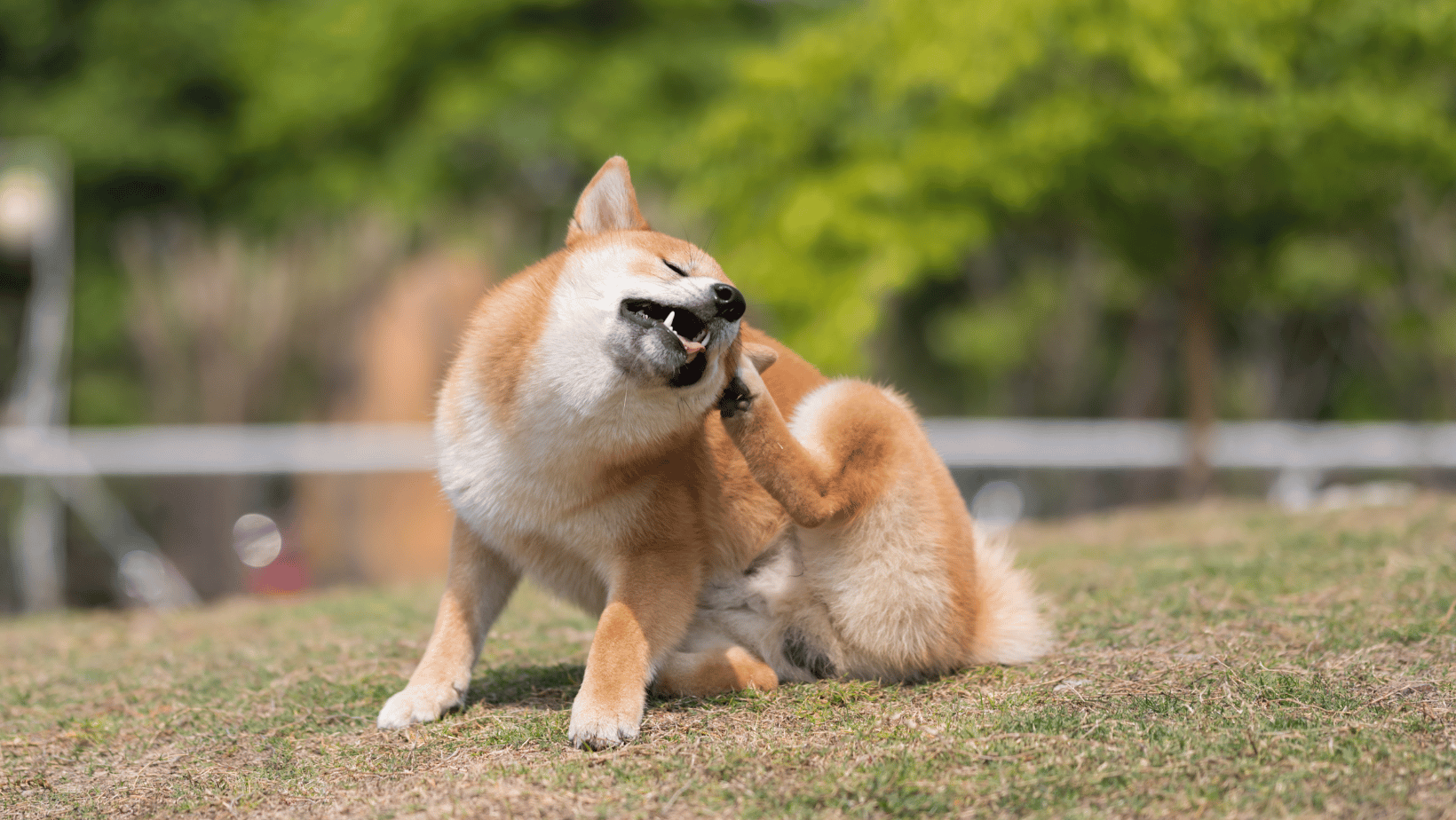Oh no, a flea infestation – what steps should I take?
It can happen to anyone: a flea infestation at home! If you’re not careful, fleas can multiply rapidly. A quick playdate with an infected pet, and a few days later your dog might be scratching intensely and have a coat full of eggs. The fleas have probably already spread throughout your house. How can you stop such an infestation quickly and effectively?
Fleas & ticks

20 November '25 • 2 min reading time
The life cycle of a flea consists of four stages: egg, larva, pupa, and adult flea. Female fleas can lay hundreds of eggs, usually in the fur of an animal – your dog, for example. The eggs fall off and develop in the environment, such as in cracks, under baseboards, or in dog beds and furniture. Even if you see only a few fleas, the infestation might already be growing fast. The eggs hatch, the larvae feed on organic material and flea dirt, then pupate, and adult fleas emerge. They look for a host to suck blood and lay new eggs. The flea explosion has begun – you’re dealing with an infestation.
Step 1: Treat your pet
To get rid of the flea infestation, you must take several steps simultaneously. Step 1 and 2 go hand in hand, but since your pet is likely experiencing itching and discomfort, start with your dog (and cats). Wash your pet with flea shampoo and use a skin spray with beneficial bacteria to soothe irritated spots and support a healthy skin microbiome. Also, give your dog a flea collar, preferably one with natural ingredients like essential oils.
Step 2: Clean your home
Wash all your dog’s textile items – beds, cushions, and blankets – at the highest possible temperature. Wash your own bedding as well. Vacuum the entire house thoroughly, especially near baseboards and in cracks. Dispose of the vacuum bag immediately outside in a sealed plastic bag so fleas can’t escape. Use a spray with essential oils on furniture, baseboards, and cracks to prevent larvae from surviving.
Step 3: Keep checking
Check and comb your pets daily. Look for fleas, flea dirt (black specks), and eggs.
Step 4: Clean your home again
Because flea eggs and pupae often remain after the first cleaning, it’s best to clean your home thoroughly one or two more times in the following weeks. Not fun, but effective. You can try several home remedies:
- Place a bowl of water mixed with dish soap near infested areas – fleas are attracted and will drown.
- Sprinkle table salt or cleaning salt onto carpets, rugs, or dog beds, let it sit for a few hours, then vacuum thoroughly. Salt dehydrates fleas and eggs.
- Spray a mixture of water and lemon on furniture and in cracks, this helps keep fleas away.
Step 5: Prevent future infestations
Keep your dogs and other pets protected with nutritional supplements that support skin and coat health, such as biotin, zinc, and silicon. Use natural remedies to prevent fleas. If necessary, chemical spot-ons or sprays can also be used.
Step 6: Patience and persistence
It can take several weeks to eliminate all fleas, larvae, and eggs from your home and pets. Consistency and cleanliness are key to preventing re-infestation.


